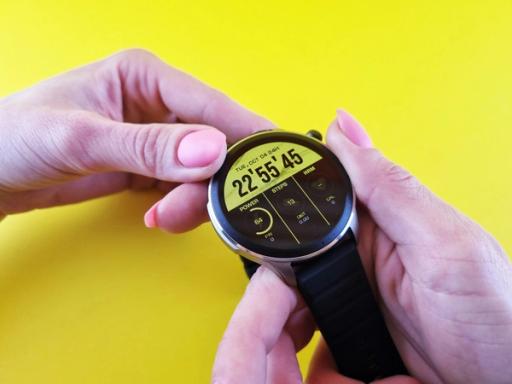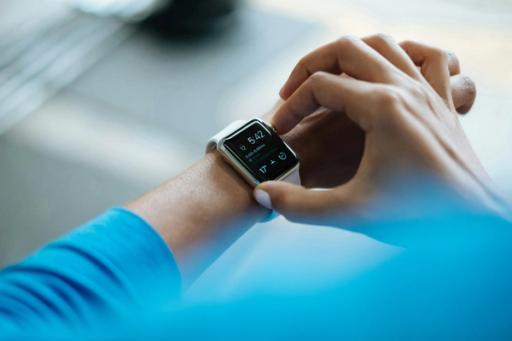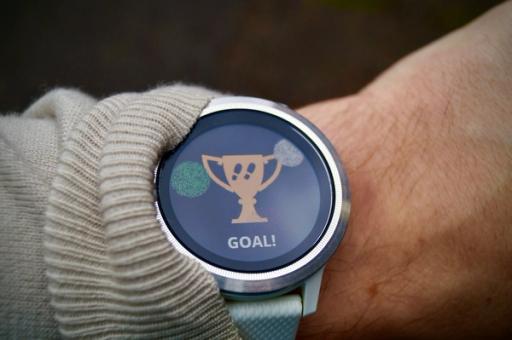
Tracking calories and physical activity can feel tedious and time-consuming. Fortunately, technology makes monitoring these components of health and wellness easier. Fitness apps, including the best app to track macros, can help you track your fitness progress over time, providing valuable insights to help you achieve your personal goals. But how accurate are fitness apps? Do they work? In this article, we'll tackle the question, "Is the fitness app accurate?" to help you understand how reliable these tools are so you can confidently track your fitness progress. We'll also offer tips for finding and using a reliable app to reach your health and wellness goals.
Cal AI's Calorie Tracker is a valuable tool for achieving your objectives, such as accurately tracking fitness progress confidently using reliable apps and expert strategies to effectively reach health and wellness goals.

Fitness trackers are electronic devices that monitor your body's performance during physical activity. They have sensors to track heart rate, activity levels, and calories burned to help users understand their habits and improve their health over time. When you engage in physical activity, for example, a fitness tracker will sense your movements and record data about your performance.
This information is processed using algorithms and displayed in easy-to-understand formats on the device or companion app. For example, if you walk a mile, your fitness tracker will tell you how long it took and calculate how many calories you burned.
If you are on a mission to count calories, then a fitness tracker can be one of the most useful tools at your disposal. You may wonder how they track the calories you consume and burn daily. Here are a few factors your fitness tracker will consider when measuring how many calories you have burned during a specific period.
When you first set up your fitness tracker, you will enter basic information about yourself, including:
This information will be used to calculate your personal basal metabolic rate, which will then be used in your device's algorithm to estimate the number of calories you are burning each day.
Your smartwatch or fitness tracker will have an accelerometer installed, which tracks your activity level each day. The algorithm uses the data collected by the accelerometer to calculate the number of calories burned.
The accuracy of your fitness tracker will depend mainly on the information you manually enter into it. That's why it's essential to be as detailed as possible when inputting data, such as the food you have consumed or the activities you have participated in throughout the day.
The algorithms used to calculate the number of calories burned will vary based on the fitness tracker you purchase. So, read up on the specific device you are considering before you make your final purchase.
Have you ever noticed a strobing green light on the underside of your smartwatch or fitness tracker? This small green LED light, combined with a light sensor, helps measure and calculate your heart rate through photoplethysmography (PPG).
Because your blood absorbs green light, your tracker can determine your heart rate by measuring the difference in light absorption at any given time. While this is a useful trick, technology is sometimes the most accurate way to measure heart rate.
Those who are avid fitness tracker wearers can often be heard talking about how many steps they have taken in a day or their step goal for the next day. For many, it's a great way to stay motivated and may result in friendly competition with their friends, coworkers, or family members. Since counting steps is an essential function of the fitness tracker, it's necessary to understand how these devices count the number of steps you take in a day.
Every fitness tracker, regardless of its make or model, includes an accelerometer. This innovative device tracks your movements throughout the day and interprets them based on the initial data you provide when setting up your fitness tracker. The accelerometer counts your steps, records the pace of your steps, and estimates the number of calories you burn while taking those steps.
Another hallmark feature many fitness trackers promote is their ability to tell you how long and even how well you slept. This often begs the question: how does a device know when I am sleeping or have entered deep sleep? Again, the fitness tracker uses its accelerometer to track your movements; it detects when you have been laying still for some time and begins counting that as sleep. Some of them claim to track the various stages of sleep, but it is challenging to do this with the accelerometer alone.
You don't move anymore or less during the multiple stages of sleep, which occur primarily in the brain. Accurately measuring the different stages requires devices that measure brain waves or monitor eye movement in the case of REM sleep. Some trackers use heart rate monitors in addition to the accelerometer, claiming that different stages of sleep correlate with other heart rate patterns.
Some sleep scientists dispute this claim. With that in mind, you should be wary when relying on your fitness tracker to help you manage your sleep or detect sleep disorders. They can give you a general sense of how much sleep you get in a given night but little beyond that.

The Apple Fitness app for iPhone and Apple Watch delivers decent calorie tracking accuracy, much like other fitness and health trackers. Regarding calories, research supports the notion that Apple’s devices get it right, but some studies also point out that they can overestimate the numbers.
For instance, a 2020 study in the journal Nutrients found that the Apple Watch overestimated calorie expenditure during exercise by about 16 percent on average. Other research has shown even higher errors.
A 2019 study in the Journal of Applied Physiology found that the Apple Watch overestimated caloric burn during a walking test by 34 percent. Similarly, a 2018 study in the International Journal of Exercise Science found that the Apple Watch overestimated caloric burn during walking and running by 27 percent and 24 percent, respectively.
Despite these shortcomings, the data from the Apple Fitness app may still help track general trends over time, even if they aren’t perfectly accurate.
The Apple Fitness app uses your personal information—such as age, weight, height, and gender—to determine your basal metabolic rate (BMR) and active metabolic rate (AMR). BMR refers to how many calories you burn at rest, while AMR measures how quickly you burn calories while exercising.
The Apple Fitness app will then estimate how many calories you’ve burned using your BMR, AMR, and your supplied personal data.
The Apple Watch’s Workout app uses the accelerometer, heart rate sensor, and GPS to track your movement. The Activity app calculates movement using arm motion and an accelerometer. Your Apple Watch calculates metrics for your daily activity using the personal information you provide. Using these suggestions will help you increase accuracy even more.
If your settings are properly configured, the Apple Watch will accurately measure your caloric intake. Enter your height and weight precisely into the Health app for the best results. Additionally, ensure your Apple Watch is snugly fastened to your wrist for more precise results.
Verify that Location Services is turned on in your settings. Tap System Services after swiping down. Make sure Motion Calibration and Distance are activated. Calibrate your Apple Watch to increase the precision of your pace, distance, and calorie measurements. When GPS is limited or unavailable, calibrating your watch can help it learn your fitness level and stride, improving accuracy.
Research indicates that most popular fitness trackers are accurate; energy consumption is the only insufficient measurement. Let’s look at some limitations of these measurements.
Step Counting: Most devices work very well when briskly walking while counting steps. According to research, several variables affect the accuracy of wearable fitness trackers. These elements fall into four broad categories. Studies indicate that most commonplace devices can accurately gauge heart rate, steps, distance, and sleep quality. Energy consumption is the only measurement that still needs to be deemed sufficient. We’ll look at some limitations for these measurements now.
Because it overestimates calories burned during activity, the app typically
In other words, following the app’s recommendations will frustrate and let you down. It has a sizable food database, a straightforward user interface, and useful features. However, there are ten things you should know BEFORE using the app if you want to make the most of it without being misled, which it’s notorious for. When our collaboration officially begins, I tell my clients the following:
The difference between 212 milliliters of olive oil and 227 milliliters of olive oil isn’t what’s holding you back, despite the importance of tracking accurately, which I constantly emphasize with my clients.

It is crucial to keep your personal information up to date to enhance the accuracy of your fitness app. Your Apple Watch uses this information to calculate how many calories you burn and other metrics for your daily activity. The more precise this data is, the more accurate the results will be.
How to:
While it’s easy to assume a fitness app tracks only the information you manually input, it does much more. For example, your Apple Watch calculates how many calories you burn and other things using your personal information, including:
By increasing the accuracy of this data, you can boost your app’s performance. Make sure to receive credit for any moving and exercising you do, even if you don’t use the watch or app to track it. For instance, if you’re logged into your Apple Health and you exercise or move to the music of a third-party app, your watch will recognize this and automatically transfer any data to your existing fitness app.
As you receive feedback from your fitness app, you may find that some metrics, especially those dealing with burned calories, don’t seem right. To ensure the accuracy of your fitness app, you’ll want to ensure your Apple Watch or whichever device you are using to track your activity is indeed tracking accurately. Here are a few ways to help make sure your Apple Watch is tracking accurately:
Software updates often include bug fixes and can help improve the accuracy of your fitness app. To check for updates, open the Watch app on your iPhone and select General, then Software Update.
Your watch uses wrist detection to understand when you’re wearing it. Putting your watch on can start tracking your biometrics and movements to deliver more accurate results. Open the Settings app on your Apple Watch to verify wrist detection is turned on. Select Passcode, and check that Wrist Detection is enabled.
Your Apple Watch needs calibration. It uses the personal data you provide to calculate metrics for your daily activity. These suggestions can help me increase its accuracy even more.
Not all exercises affect your fitness app’s accuracy equally. For instance, if you want to improve your cardiovascular fitness, running, cycling, and swimming will help you achieve your goal. Use a fitness app to track your progress and switch to another activity—like running or cycling—to improve your accuracy. You will be much better off than switching to a different move, like basketball or aerobics.
Improving your fitness app’s accuracy helps you get the most precise heart rate reading while exercising. To do this, make sure your Apple Watch is snug on your wrist and use the built-in heart rate monitor for the activity instead of a third-party app.
The fit of your Apple Watch can change over time. If you’ve been using your watch for a while and notice that your heart rate readings seem off, check the fit. You may need to tighten it to get more accurate readings again.
While fitness apps aren’t perfect, research shows they tend to be more reliable than we give them credit. A study published in the Journal of the American Medical Association found that fitness trackers, like the Apple Watch, are pretty accurate. The researchers discovered that using wearable technology to measure heart rate and physical activity was reliable and valid. So, while the numbers on your fitness app may not be perfect, they can provide a good estimate of your health and progress.
According to research, the iPhone’s CoreMotion pedometer underestimated steps by only 7 points 2% on average and by 5 points 7% compared to an ActiGraph GT9X Activity Monitor.
My fitness app is accurate, right? In 95 percent of cases, app:
In other words, if you use the app’s suggestions, you’ll experience frustration and disappointment.
It has a massive food database, a simple interface, and valuable features. But there are ten things you need to know BEFORE using it to get the most out of the app without being misled, which it’s often known for.
I’ve said before that fitness trackers are more about motivation than accuracy. If they get you to be more active by prodding you to reach new goals, then they are successful. They should give you reliable data about your activity and not be far off the mark. (I consider the 5% difference in step count acceptable.)
Cal AI transforms calorie tracking with our cutting-edge AI technology. Just snap a photo of your meal, and we'll do the rest. Our app combines your phone's depth sensor with advanced AI models to:
With 90% accuracy on visible foods and multiple tracking options, we've made nutrition tracking effortless. Options include:
Gone are the days of tedious manual logging calorie-tracking apps. Whether scanning a full meal or a quick snack, Cal AI gives you accurate nutritional information in under 15 seconds. Plus, our AI learns from your feedback, continuously improving its accuracy.
Stay on track with personalized insights and brilliant reminders. Cal AI makes achieving your fitness goals simpler than ever. Track your calories with your camera using Cal AI’s calorie tracker today.